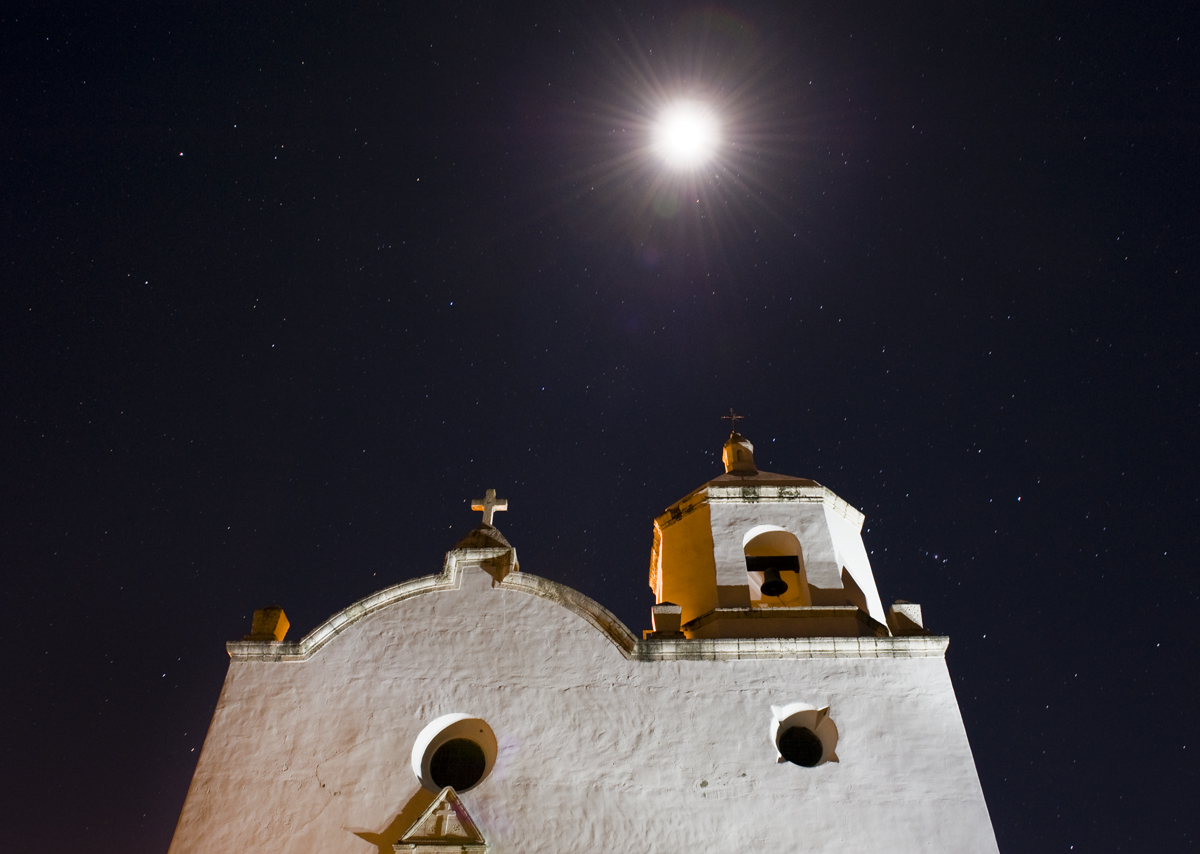
It’s 2014 and I’m back to adventuring!
Santa brought me a new tent and some camping gear for Christmas, and I couldn’t wait to try them out. As soon as the temperature rose above 65 degrees, I hit the road to Goliad State Park.
The town of Goliad is important in Texas history. It was a key location during the Texas fight for independence.
The Mission Nuestra Señora del Espíritu Santo de Zúñiga and the Presidio La Bahia, which protected the mission, were sites of bloody skirmishes, and they still stand today in and near the state park.
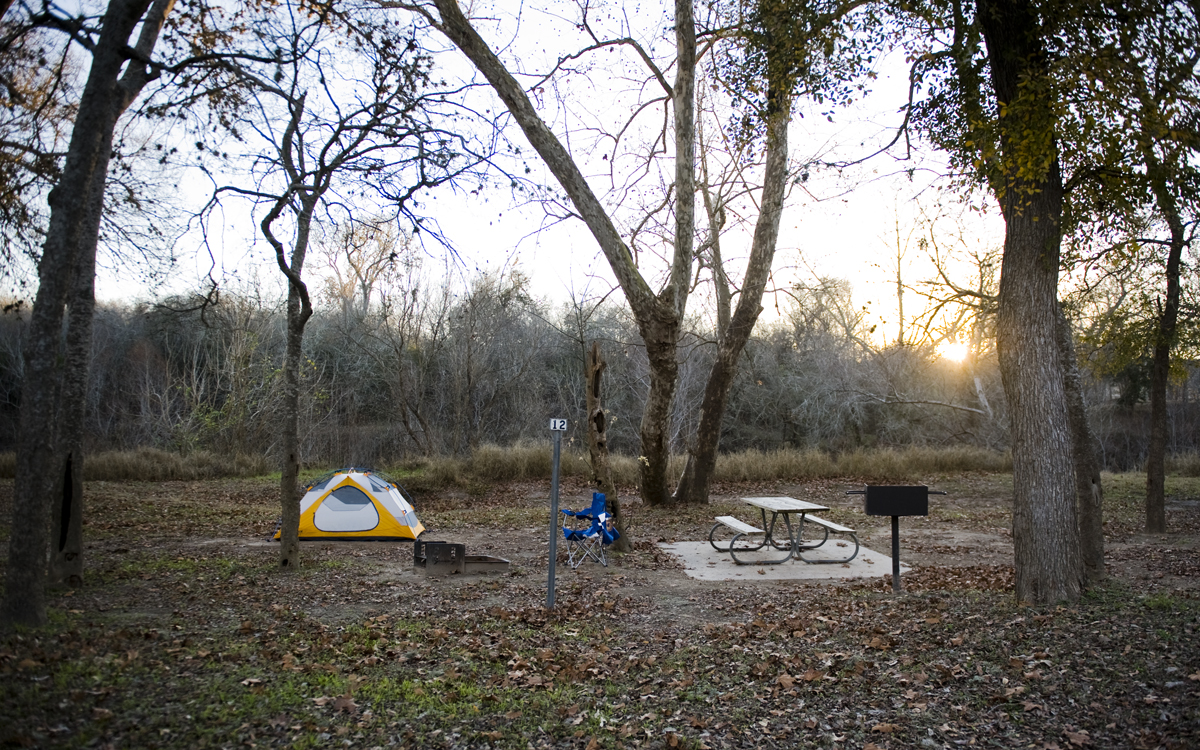
I checked in to my camp site on a beautifully clear, Saturday afternoon. I usually like to travel during the week when there’s less foot traffic, but the weather was just too perfect not to camp.
If you can stand it, I recommend going with a primitive camp site at this park. The sites with water and electric are stacked on top of each other in sort of a parking lot type situation. The primitive sites back up to the San Antonio River. There’s something about camping next to a river that just feels right to me.
Anyway, like I said, it was unbelievably gorgeous outside, so I hurried to set up my tent and drove over to the Presidio. It’s located at the southern edge of the park on Hwy 183.
Presidio La Bahia is a Spanish fort that was created in 1747. It was first located near the Guadalupe River about 20 years earlier, but was then moved to it’s current location on the San Antonio River.
I’ll tell you more of it’s history a little later in this post, but that afternoon, I just wanted to get a general sense of the place and take a few pictures before the sun got too low in the sky. I walked around the outside of the fortress, which was practically medieval.
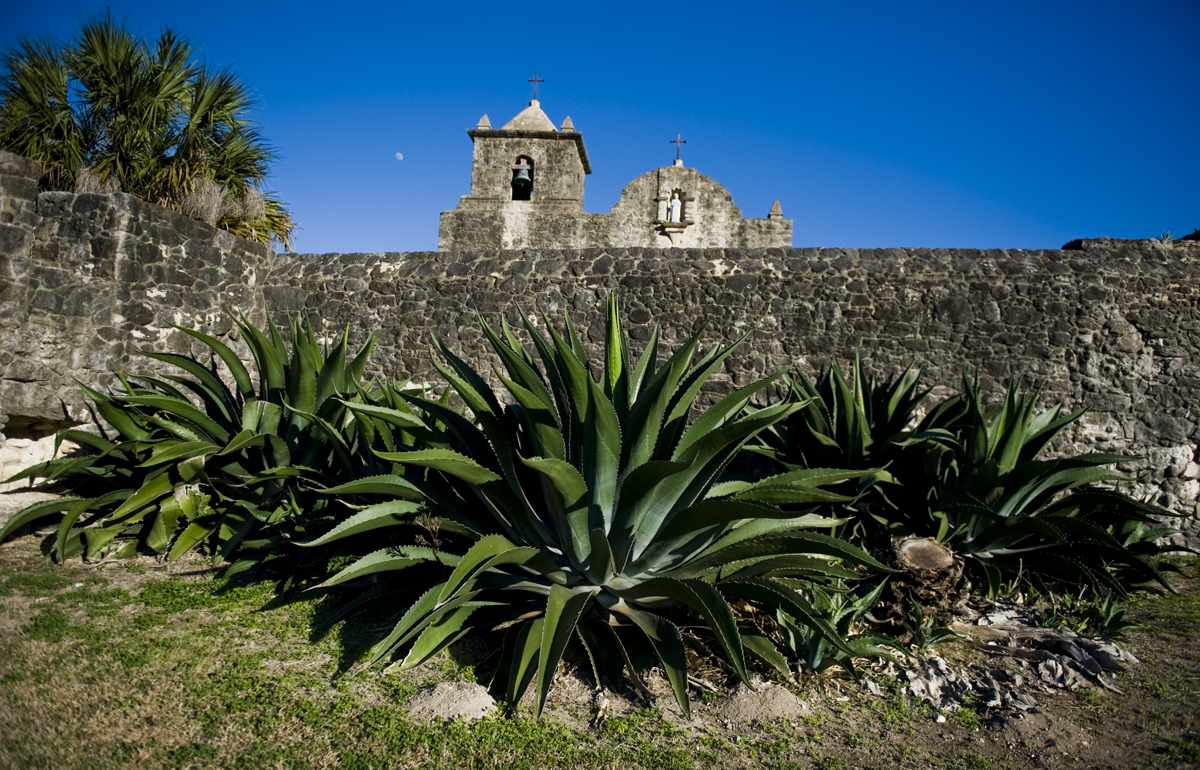
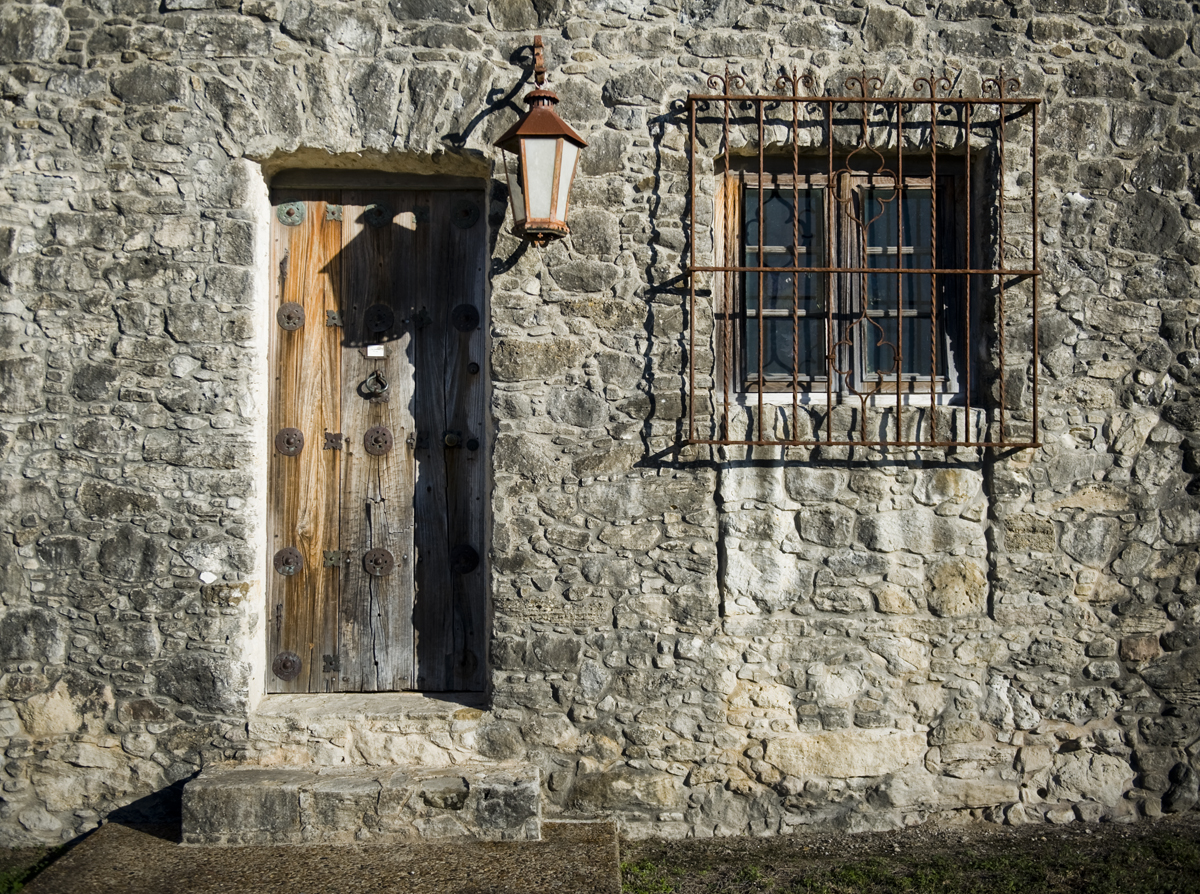
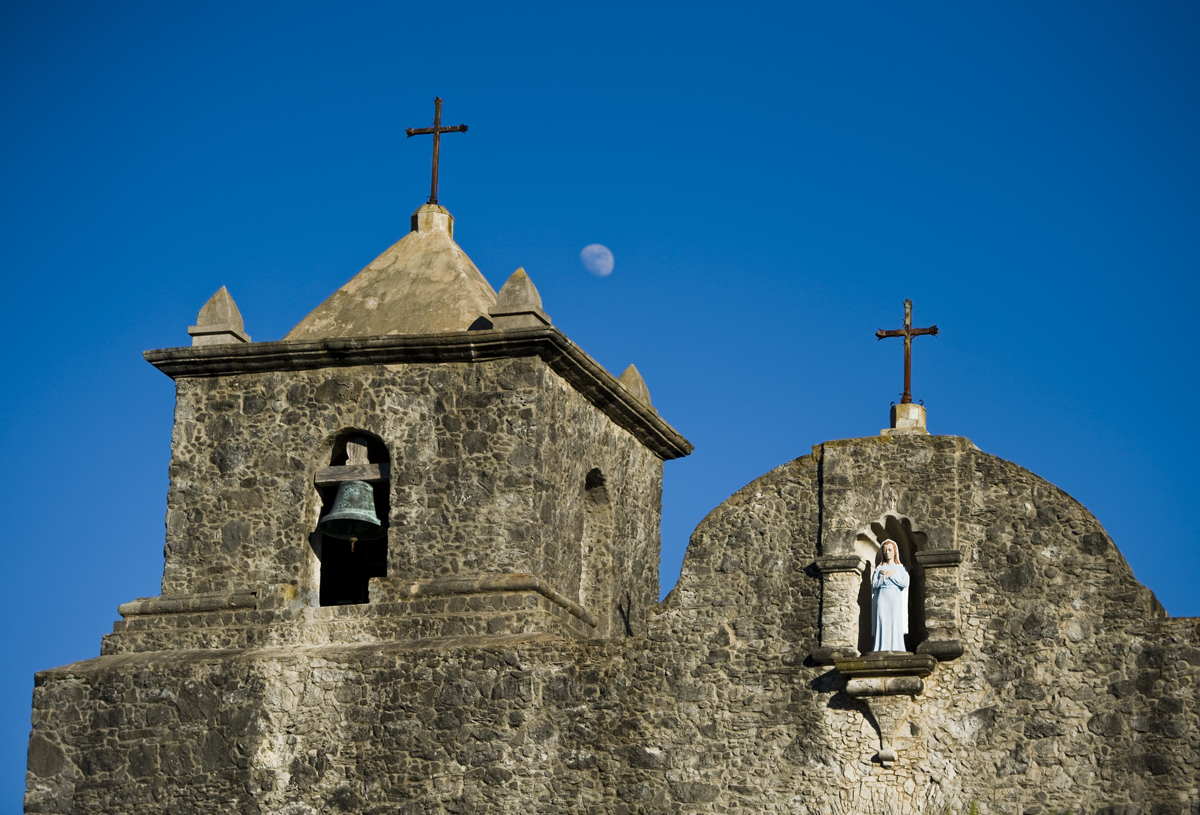

It was about 4 p.m. when I finished walking around. They closed at 4:45 p.m., so I decided to come back in the morning to see inside.
Instead, I used the rest of the daylight to go see the mission, which is just inside the front gate of the state park. I walked around and took some pictures there as well.
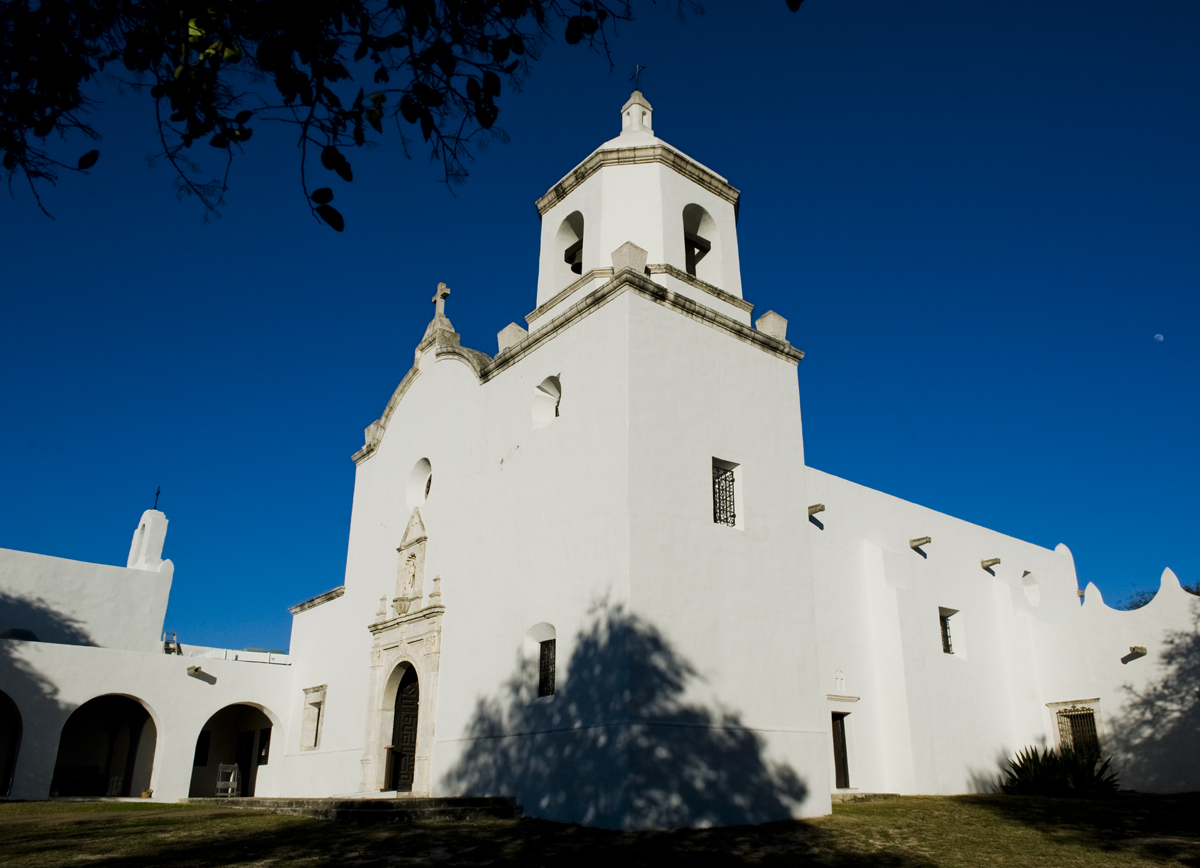
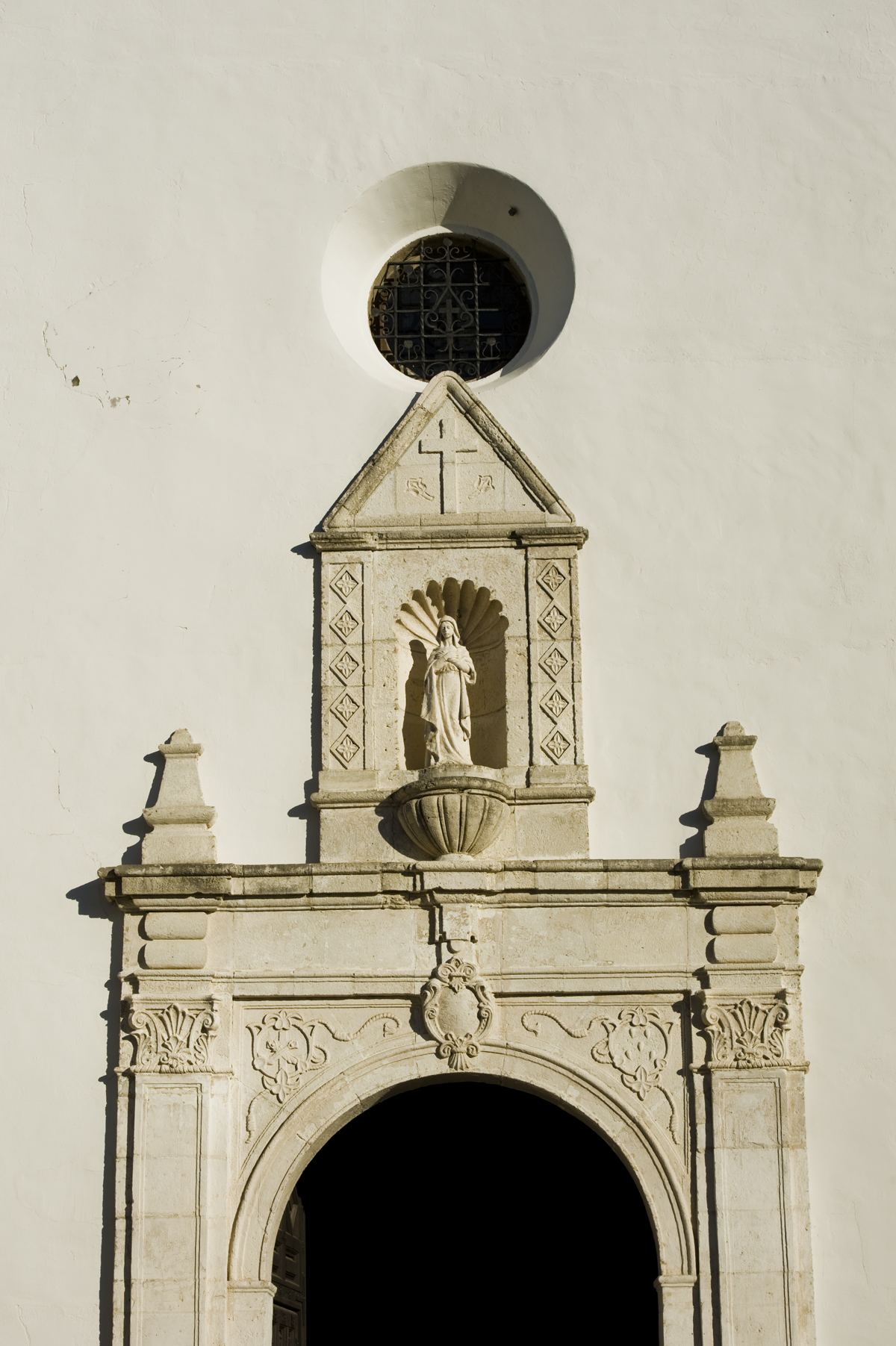
Mission Nuestra Señora del Espíritu Santo de Zúñiga was moved to it’s current location in 1749. Before Goliad, it was established in Matagorda Bay, then Victoria.
The Goliad location originally included a large Roman Catholic chapel, rooms to house a priest and Indian families, a granary, workrooms and a forge, with stone walls surrounding the property.
It became the first large cattle ranch in Texas with about 40,000 head of cattle, and also served as farmland to provide for residents and trade.
In 1830 the mission secularized and lands were acquired by local residents. The structures were dismantled to use the bricks and stones for other buildings. A remaining structure was used for a school for a short time, but then fell in to ruin.
In 1930 the Civilian Conservation Corps (CCC) restored the mission and it’s surrounding structures and the land was made in to a state park.
I had a little bit of time to roam the buildings and walk around the chapel before it closed for the night.
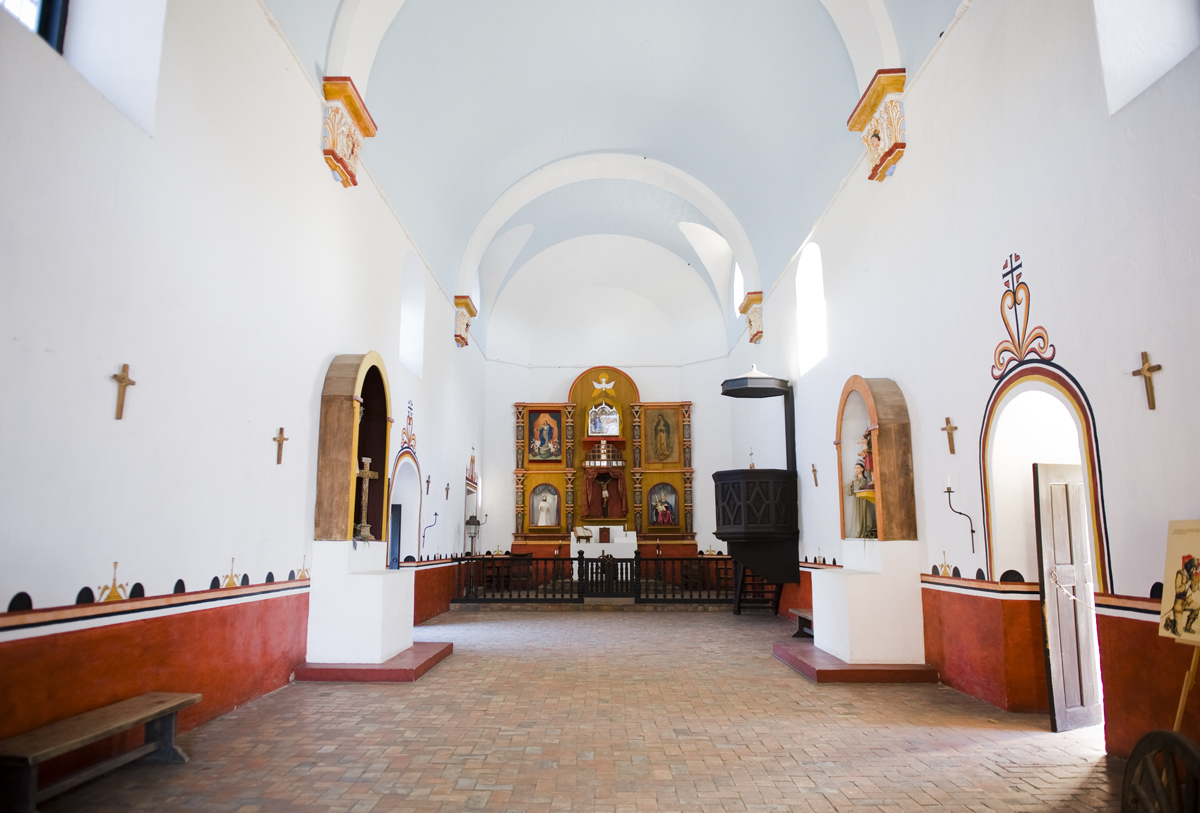

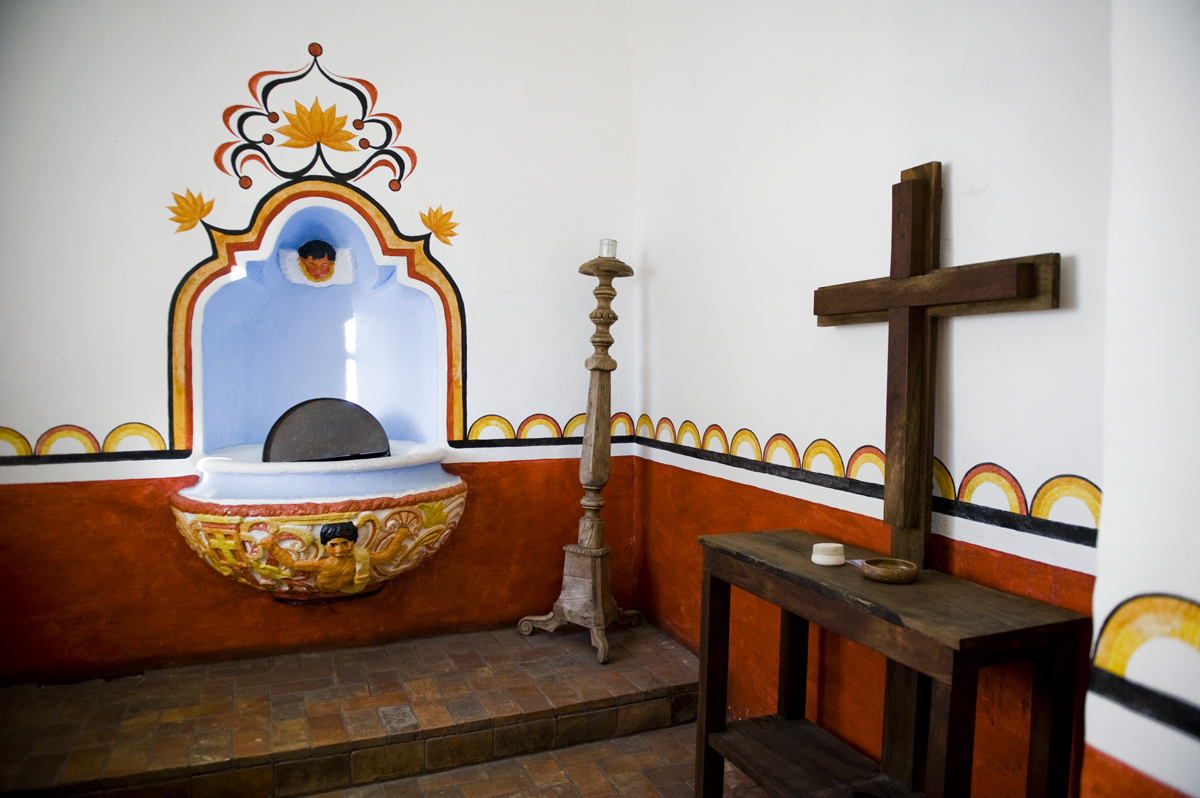
As the sun set, I thought I’d take a short hike. There’s a River Hiking Trail that runs along the banks of the river, so I wandered down the path behind my camp site. I didn’t get very far before I had to turn around. Tall grass, reeds and a poorly marked path prevented me from going very far.
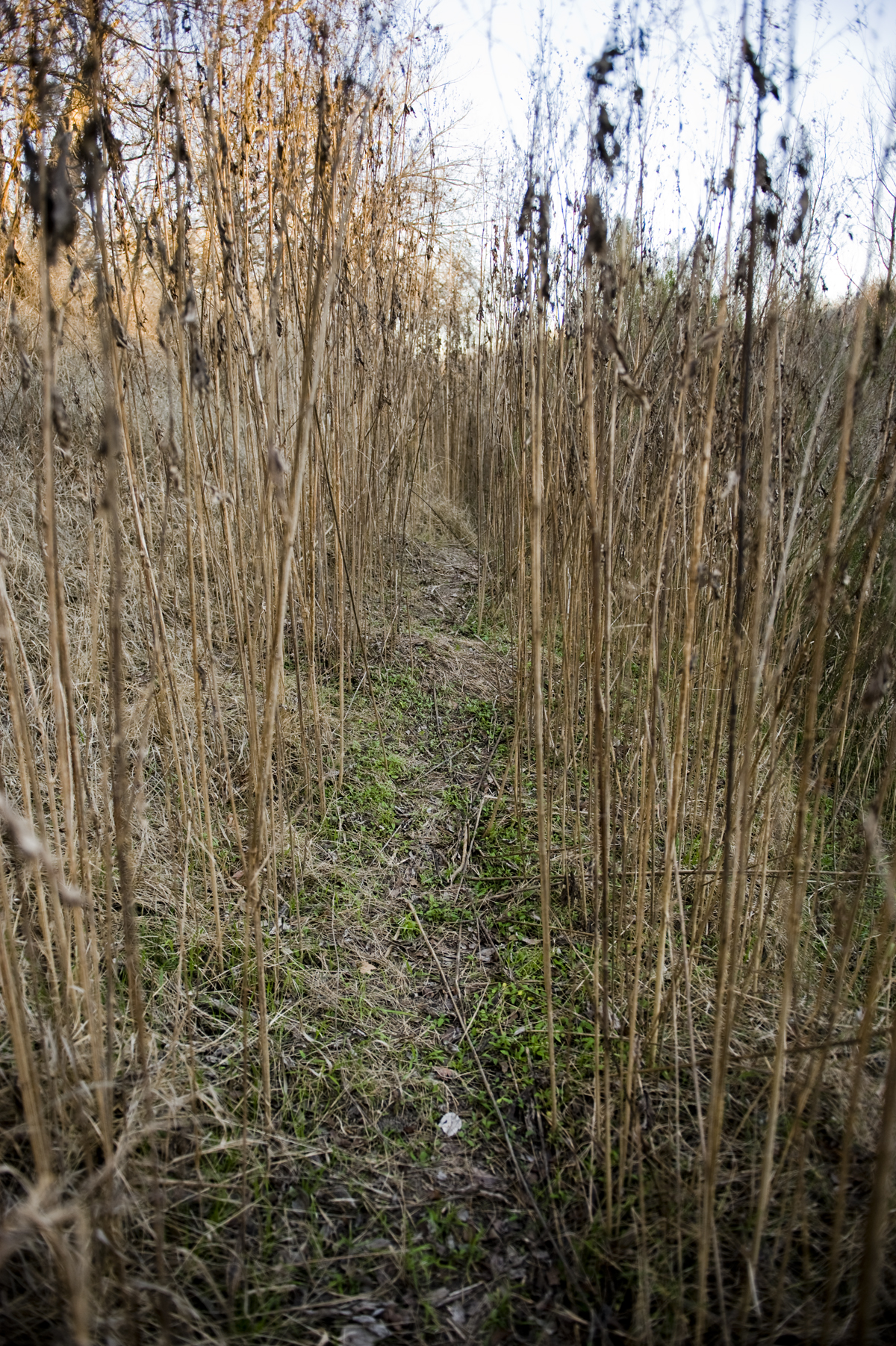
I did see the sunset peaking through the bare tree branches, and I saw a neat spider web.
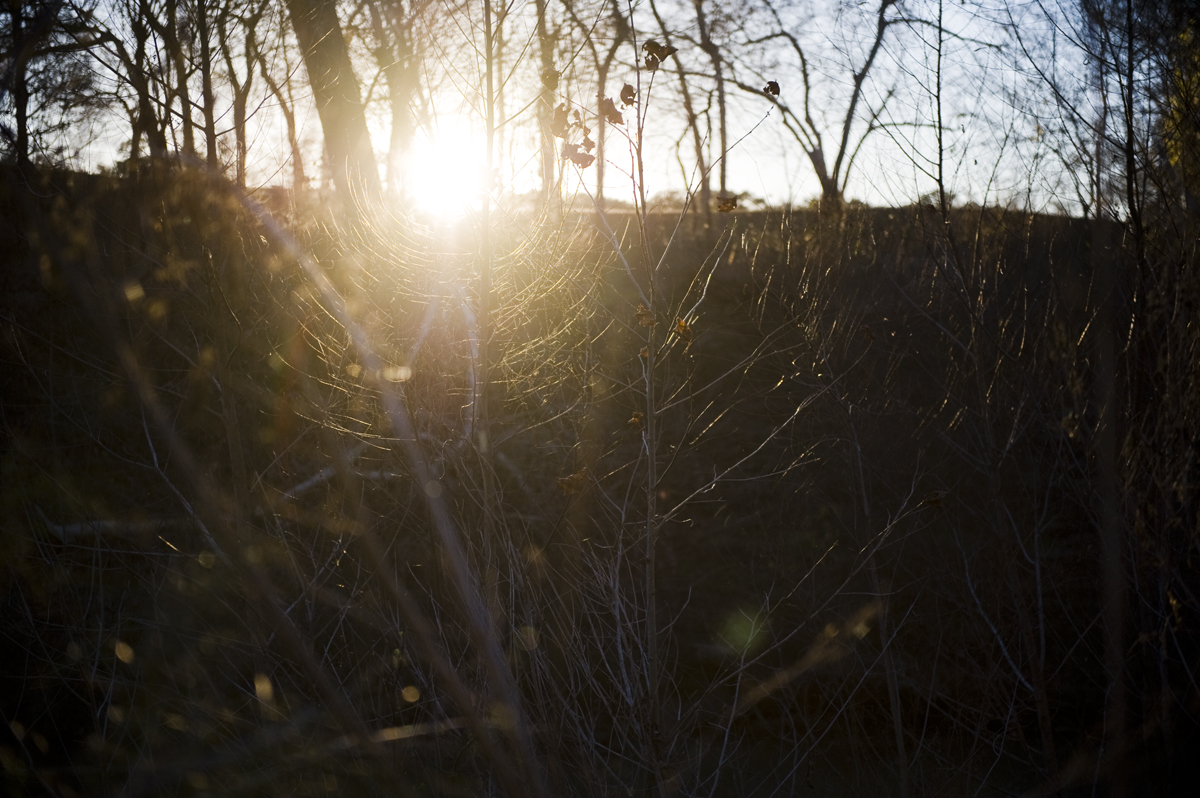
After my failed attempt at a hike, I settled in my camp site and made a fire and some dinner. I wasn’t ready to turn in, though, so I returned to the mission to see what I could do with the beautiful white chapel against a starry backdrop.
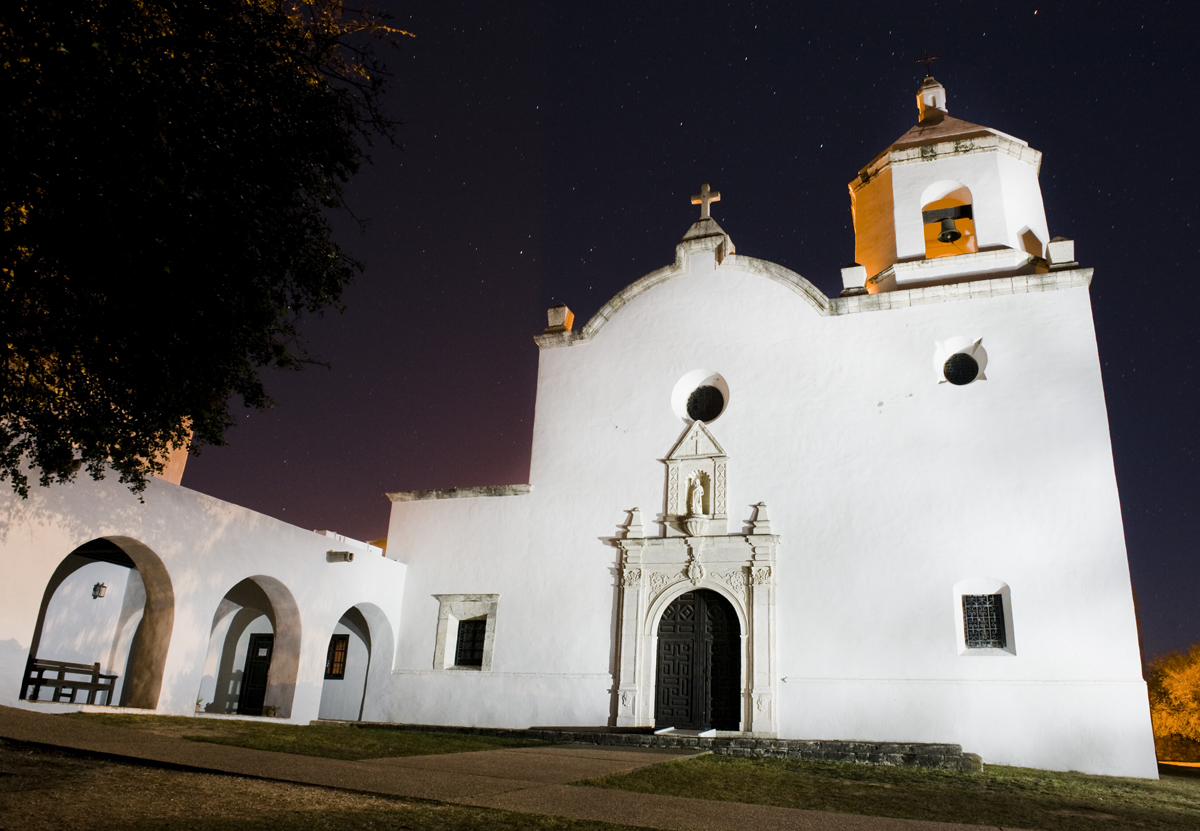
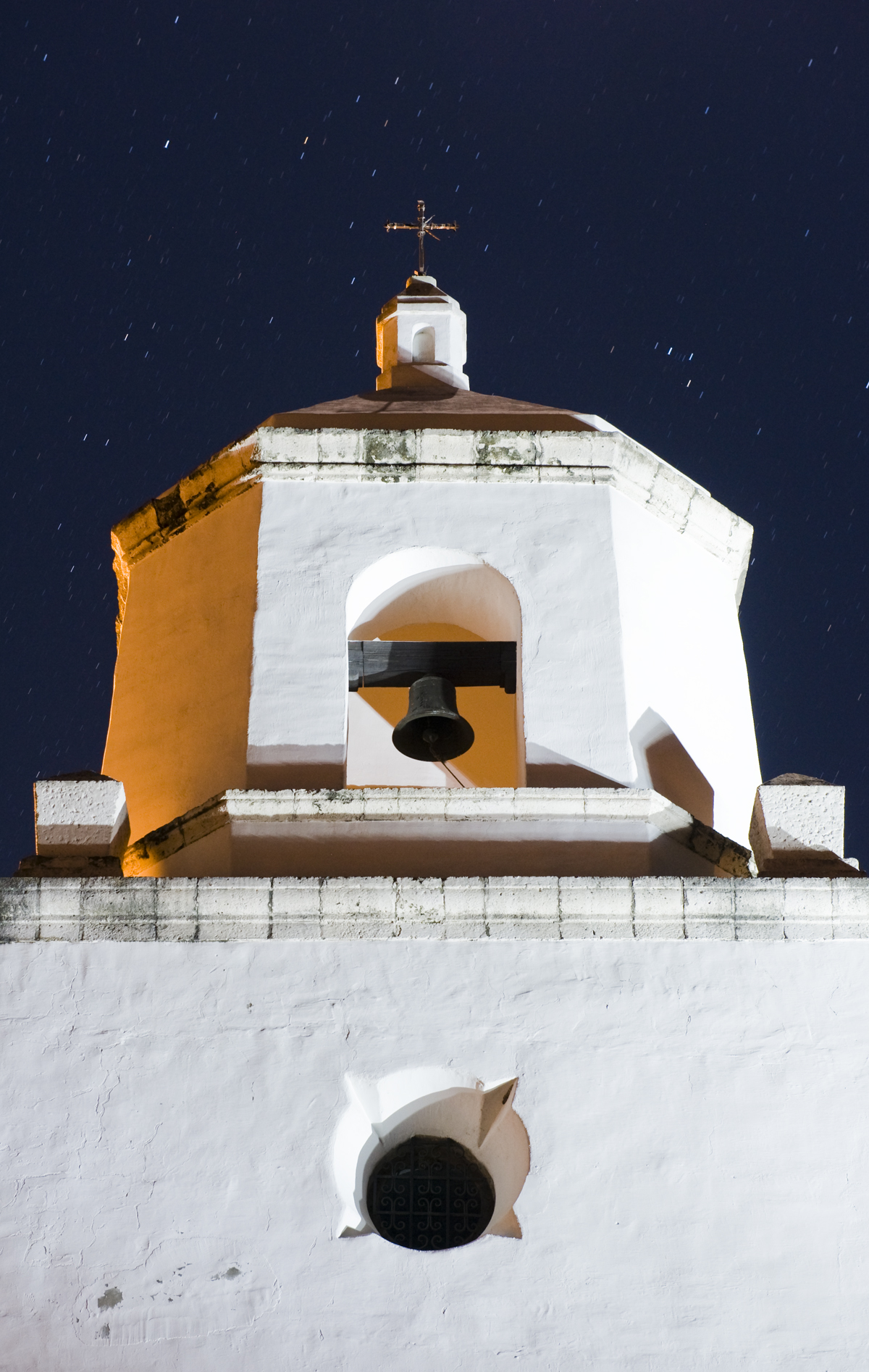
I used a slow shutter speed, about 30 sec. (I forgot my locking shutter thing), and painted the church with an LED Maglite. The shot at the very top of the post is my favorite.
After a few minutes, a park ranger came by. Apparently you’re not supposed to be in the area of the mission after dark. Oops! She said they have problems with ghost hunters and vandals. I explained what I was doing and she kindly let me stay.
When I finished, I returned to my tent for the night. It was a cold night. Temperatures dipped in to the 30s, and I huddled in my sleeping bag with multiple layers of clothing and a wool hat.
Before I knew it, my alarm rang and I got up to shoot the sunrise. When I stepped out of my tent, I saw fog. Lots and lots of fog.
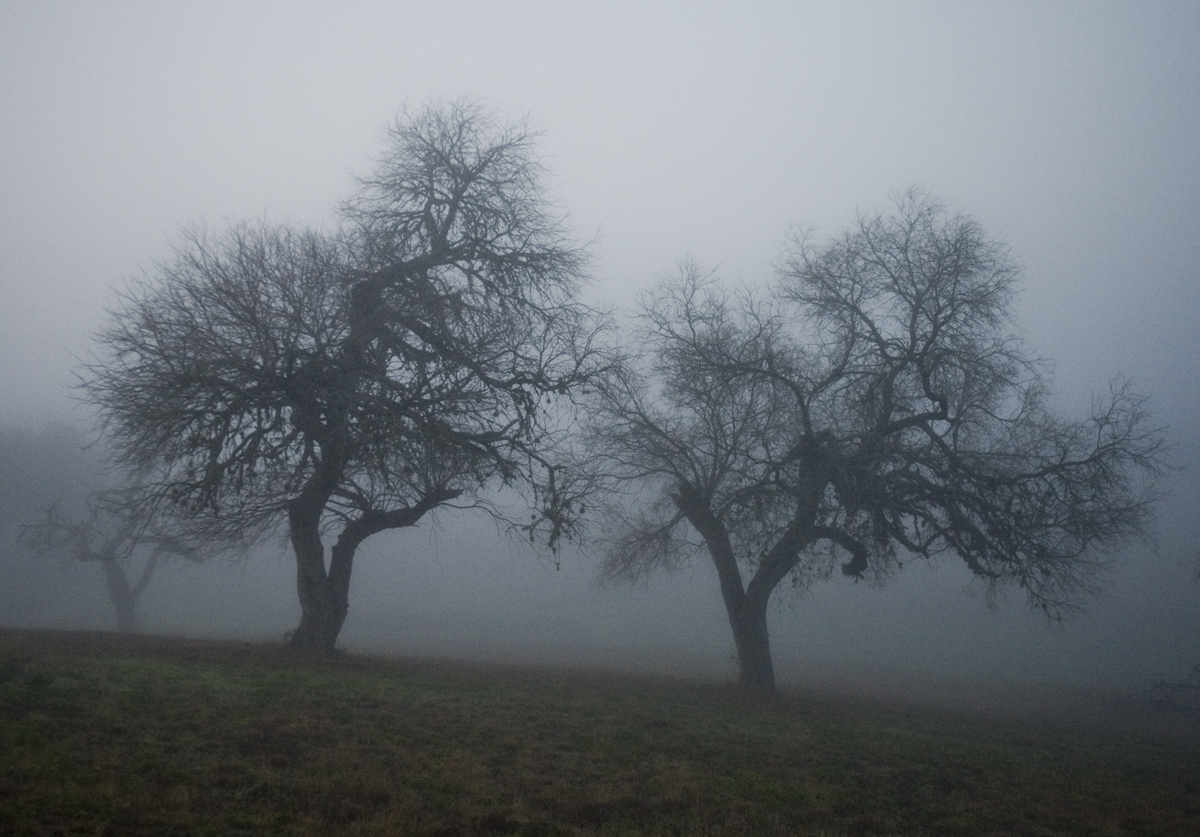
So much for my hopes of a colorful sunrise.
I decided to go the opposite direction and look for spooky scenes near the Presidio.
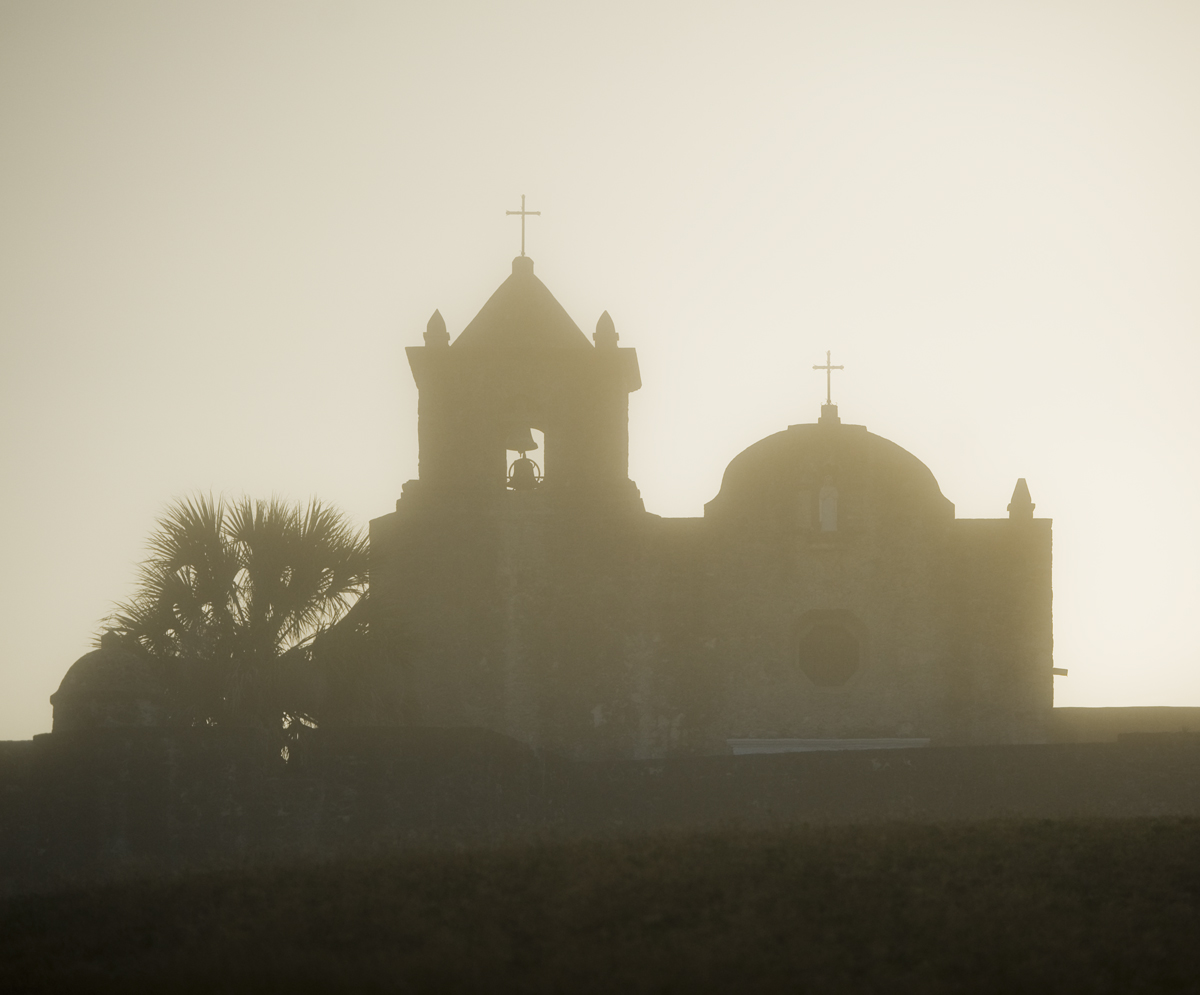
Behind the stone walls of the Presidio, there was a statue called, “The Angel of Goliad.” It memorialized Francisca Alavez, a woman who intervened in seven incidents to help Texas soldiers. She also hid Texas soldiers and pleaded for their lives during the Goliad Massacre.
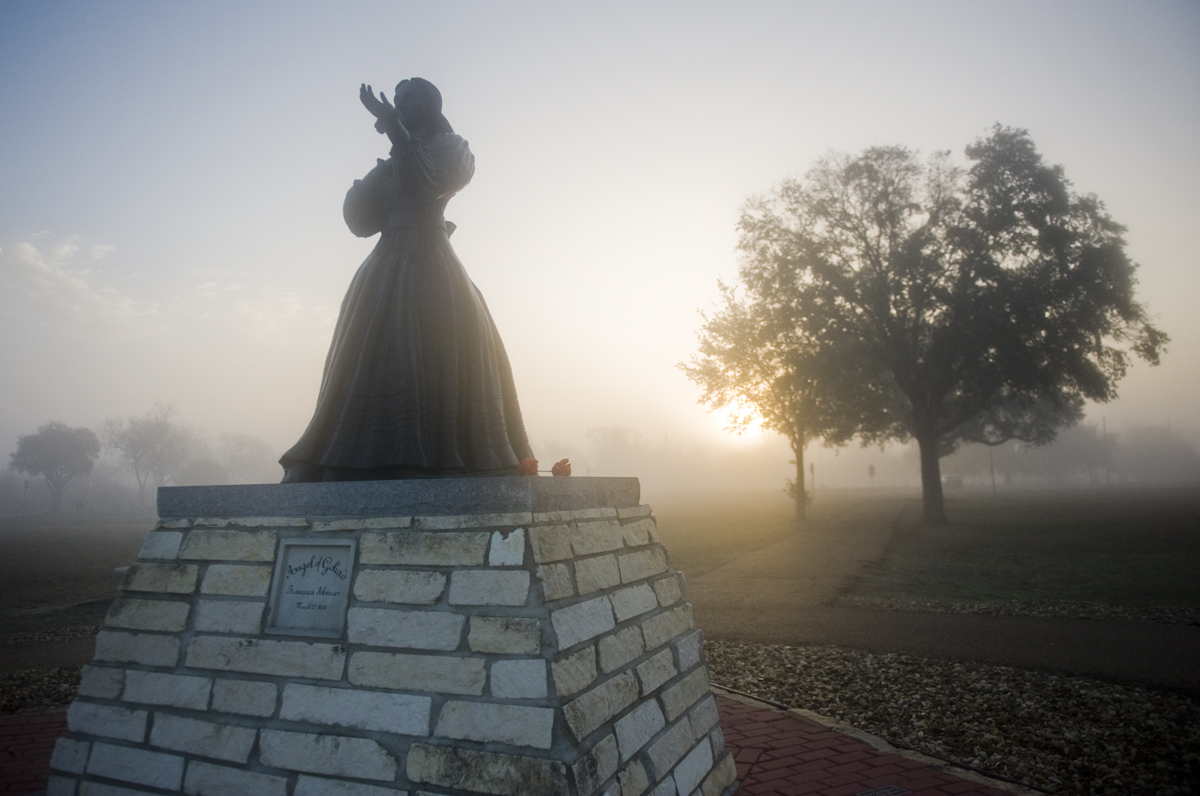
Beyond the statue was a monument to Col. James Fannin and 400 of his men, who lost their lives on March 27, 2836 (the Goliad Massacre) when they unknowingly marched in to battle against Gen. Santa Anna’s army. The survivors were executed in the fort compound, with Fannin being the last to die.
The corpses were partially burned and left out in the open. This Goliad Massacre took place about three weeks after the fall of the Alamo. After the Battle of San Jacinto on April 21, 1836, which won our independence from Mexico, Gen. Thomas J. Rusk and the Texas Army collected the soldiers’ remains and buried them with a military funeral.
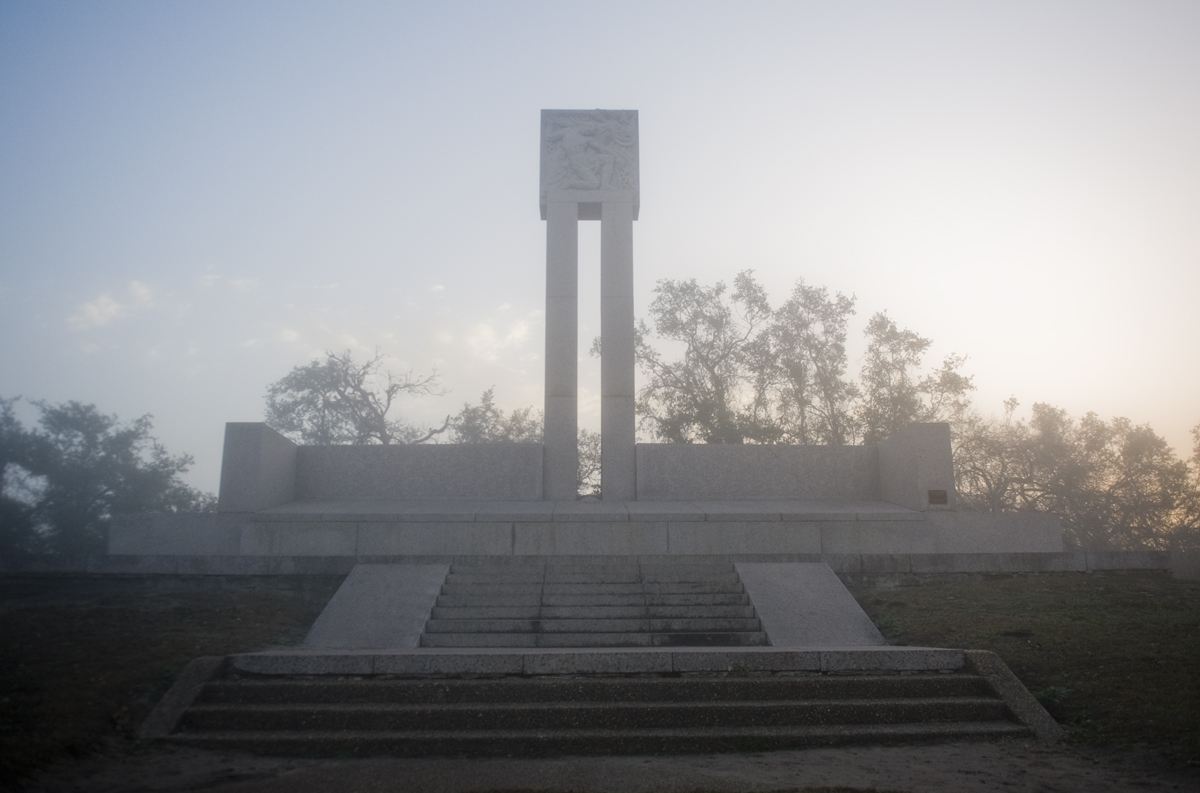
I was starting to get the gist of the history of Goliad, but I didn’t have it all put together yet.
This monument got me curious about the battlegrounds, which weren’t very far away. About a 20 minute drive, in fact, and I had about an hour to kill before the presidio opened.
I drove out to the Fannin Battlegrounds, which are supposed to be opened daily from 8 a.m. to 5 p.m. I arrived around 8:30 a.m. and the gate was locked. From what I could tell, there was no other entrance. I peered through the gates to see what I could, but the fog hindered me from seeing much, except a faint monument in the distance.
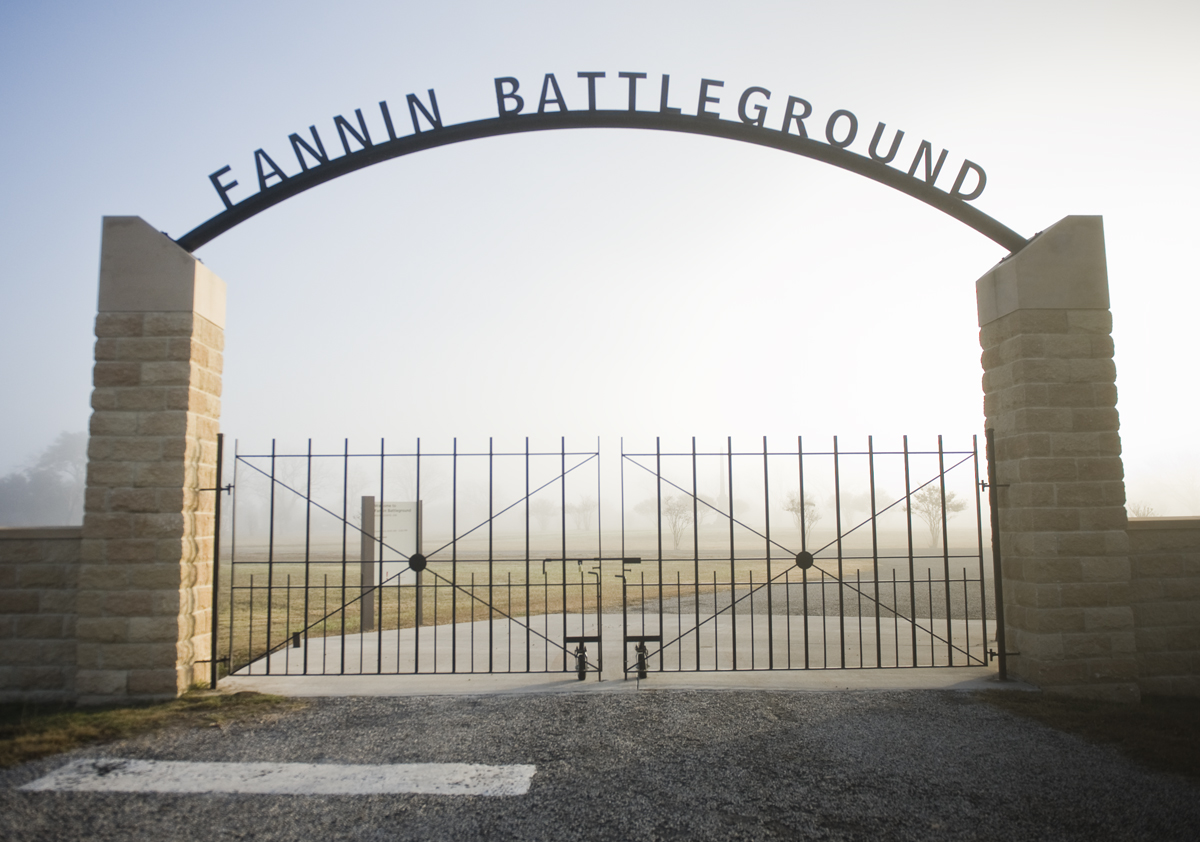
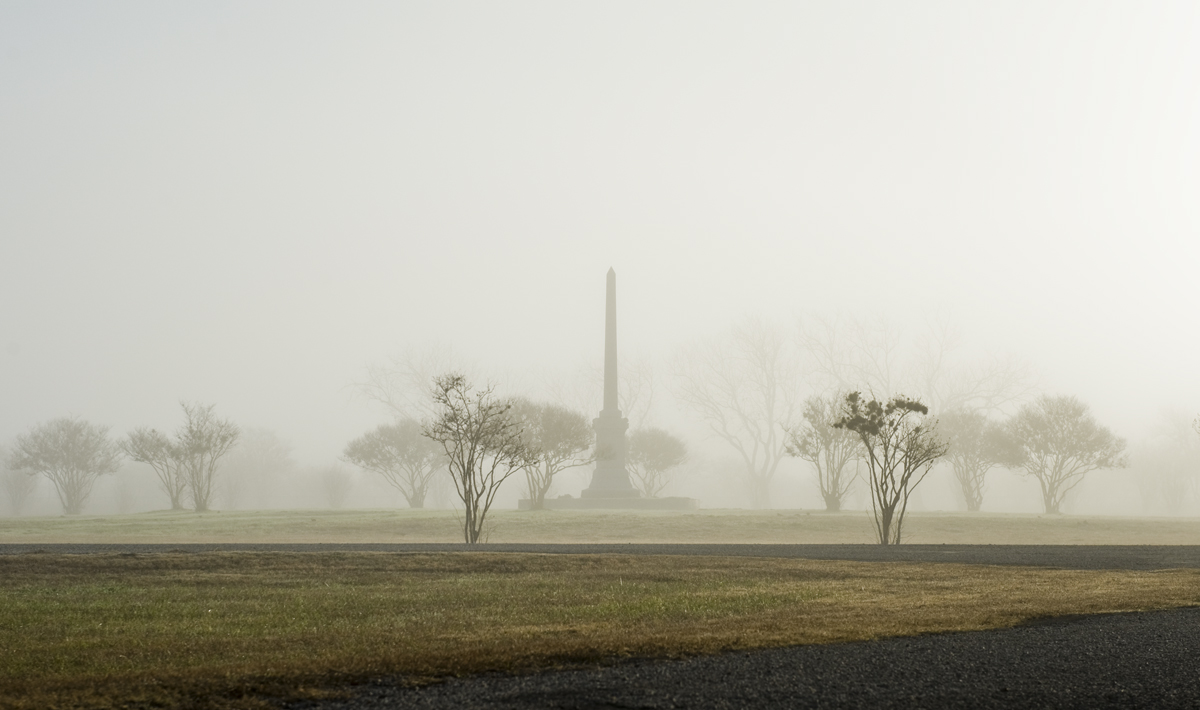
I waited around for about 20 minutes and figured no one was coming. Foggy Sunday mornings don’t seem like they’d be the height of the tourist season.
On my way back to town, a small sign pointed me off the road to historic down town Goliad. I took a little detour to see down town, which was also deserted on that Sunday morning.
The focal point of the town square, was, of course, the courthouse. I stopped to take a picture or two, and I couldn’t help but notice a great tree next to the building.
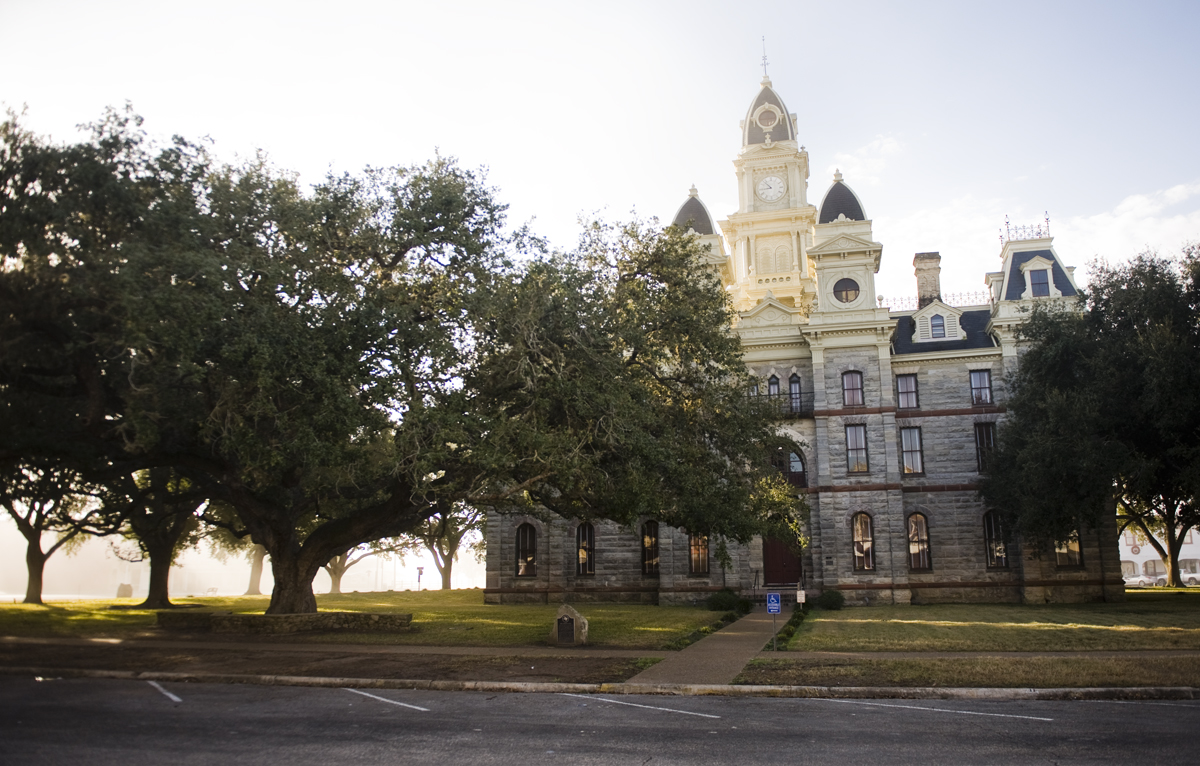
There’s something about a good tree that captures me. I don’t know why, maybe it’s an innate need to climb it, maybe it’s the fact that it’s been around for longer than any of it’s surroundings, or maybe it’s the firm, unmoving omniscience of it’s shape as light streams through it’s branches. Whatever it is, I appreciate a good tree, and this was a great tree.
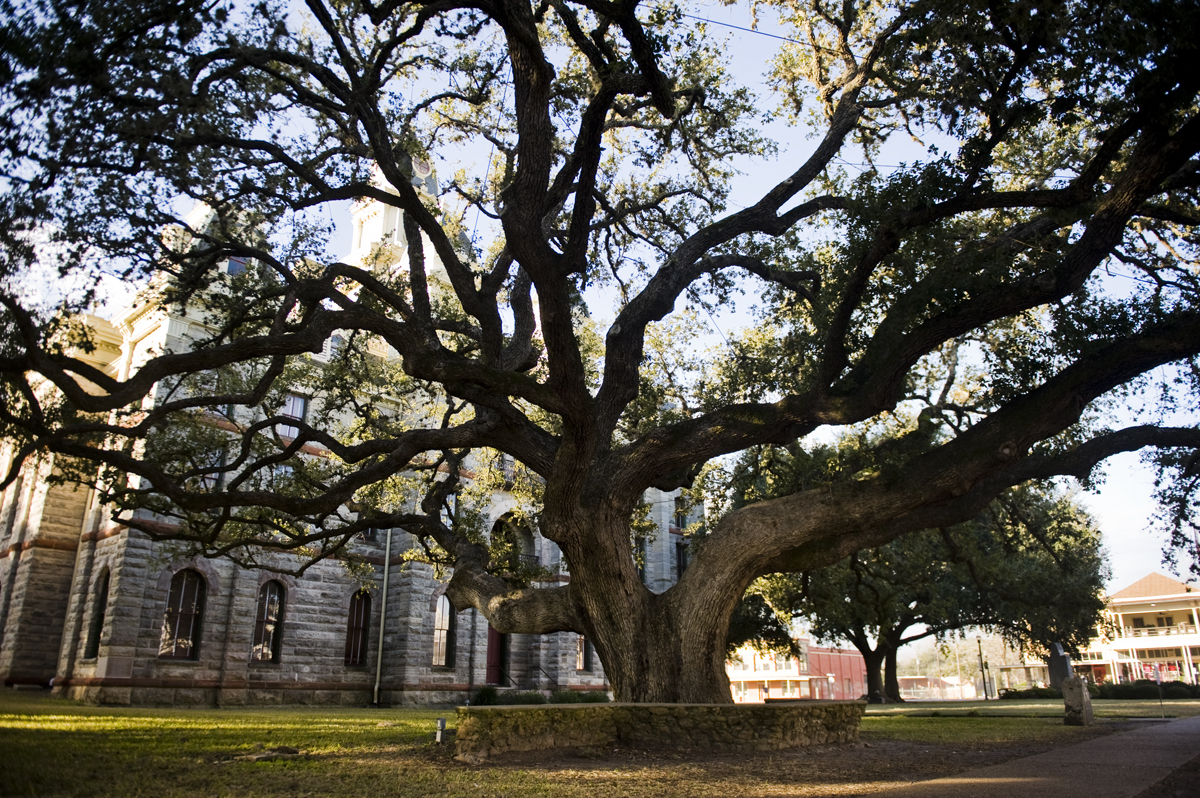
I was so captivated by it, in fact, that I nearly tripped over the sign that specified exactly why this tree was so great. It’s called “The Hanging Tree.”
This tree served as a court meeting place from 1846 to 1870. “Capitol sentences were carried out immediately, by means of a rope and a convenient limb,” said the plaque. Across the street there’s a restaurant called the Hanging Tree restaurant. I would’ve stopped in, but again, it was Sunday morning before 10 a.m. and no respectable business is open at that hour…
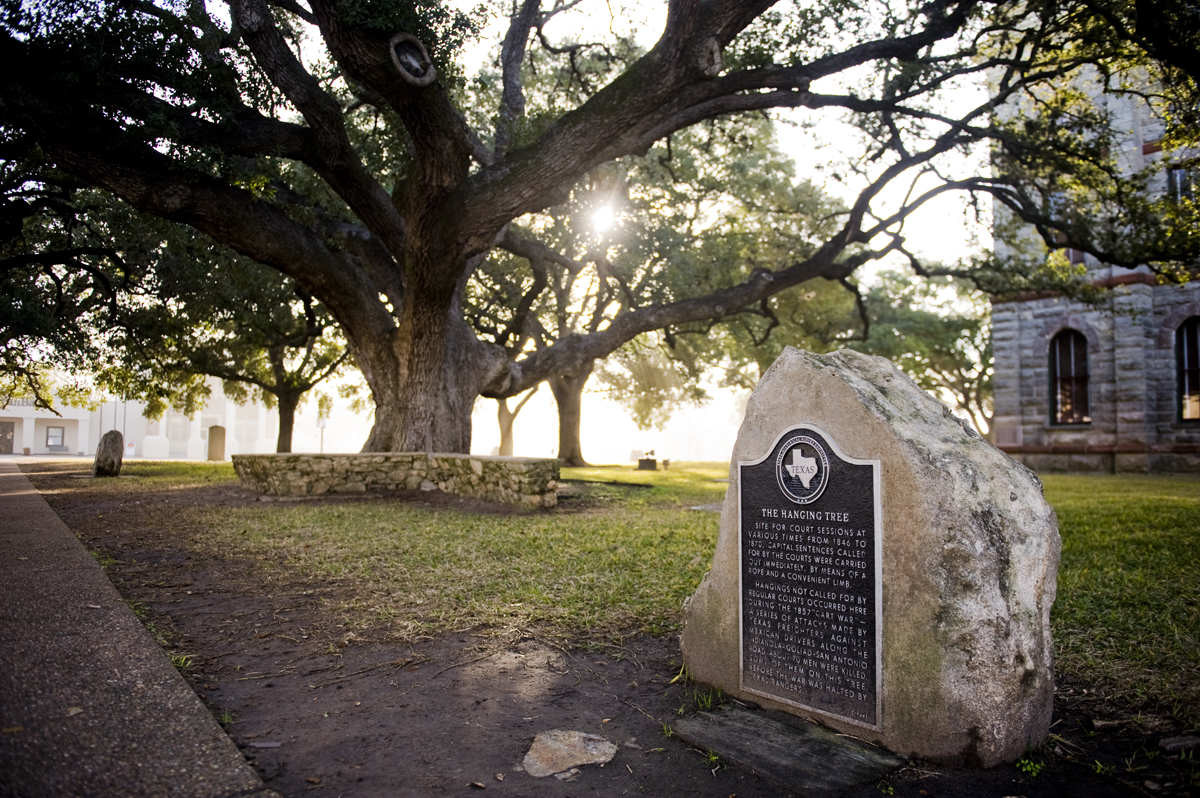
By the time I returned to my camp site and ate some breakfast, the fog had burned off and the presidio was open.
I finally went inside, paid the $4 entry fee and looked around. There’s a 15-minute video that overviews the history of the fort. It talks about when and why the presidio was built, and it’s battle-wounded history.
In the early 1800s, the presidio was captured twice, once by the Republican Army of the North and once by the Long Expedition, both of which took place during the Mexican War of Independence. Spanish troops eventually won in both of those battles, reclaiming the the presidio.
In 1821, Texas became part of Mexico and Presidio La Bahia became an important military hub. In 1835, shortly after the Texas Revolution began, a group of Texians attacked the presidio, and, after a 30-minute battle, Mexican troops surrendered. Texian troops took over and re-named the presidio Fort Defiance.
After some confusion as to who was in charge, Col. James Fannin assumed command of Fort Defiance on Feb. 12, 1836. On March 6, 1836 the Alamo fell, and on March 14, 1836 Gen. Sam Houston ordered Col. Fannin and his men to retreat from Goliad and to head for Victoria.
The retreat began five days later on March 19, 1836, and Fannin and his men were in no hurry. They made it to Coletto Creek, about nine miles away from Presidio La Bahia, before the Mexican Army attacked. The Texians fought back, but the next day, March 20, 1836, Fannin was forced to surrender.
The Texians were taken back to La Bahia and, on March 27, 1836, Mexican soldiers executed the remaining Texians, leaving their bodies half burned and unburied. That day became known as the Goliad Massacre.
As I walked through the presidio grounds, I felt almost claustrophobic. The area is walled-in for protection, but it’s fairly open inside.

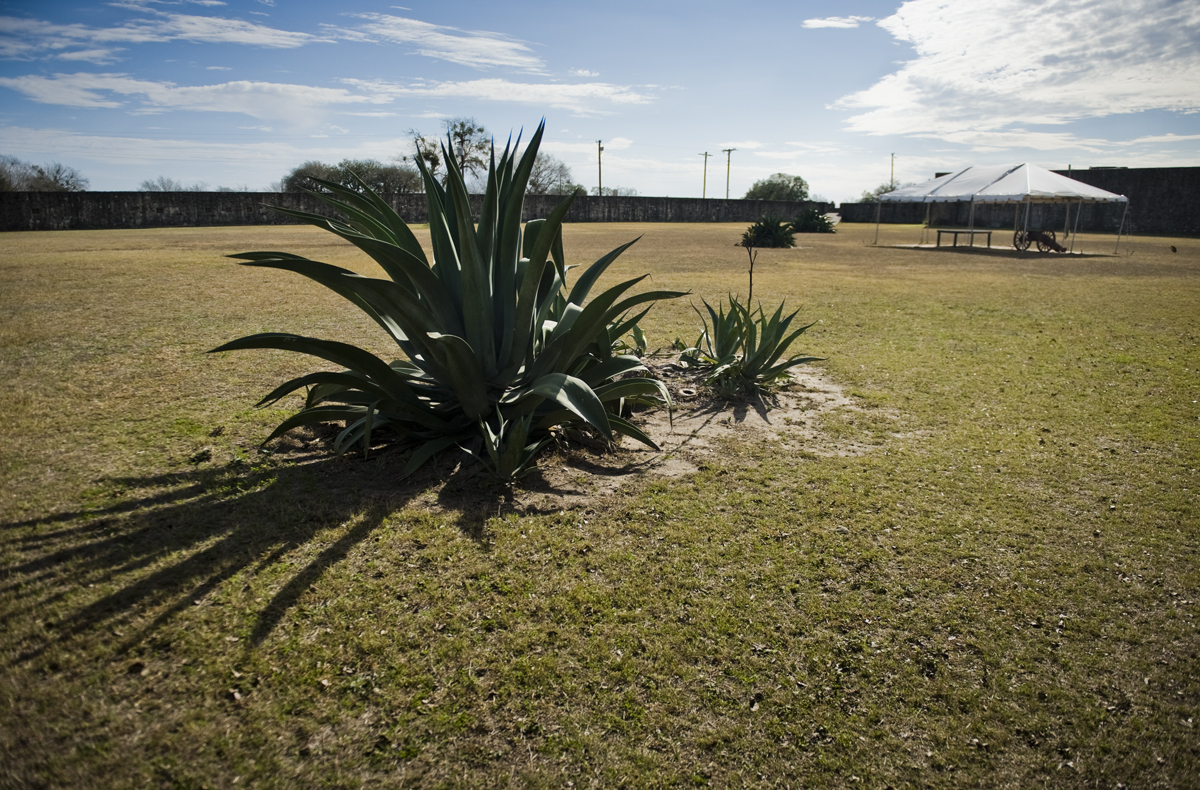
There’s a tower on each corner of the fort, with places for cannons and artillery.
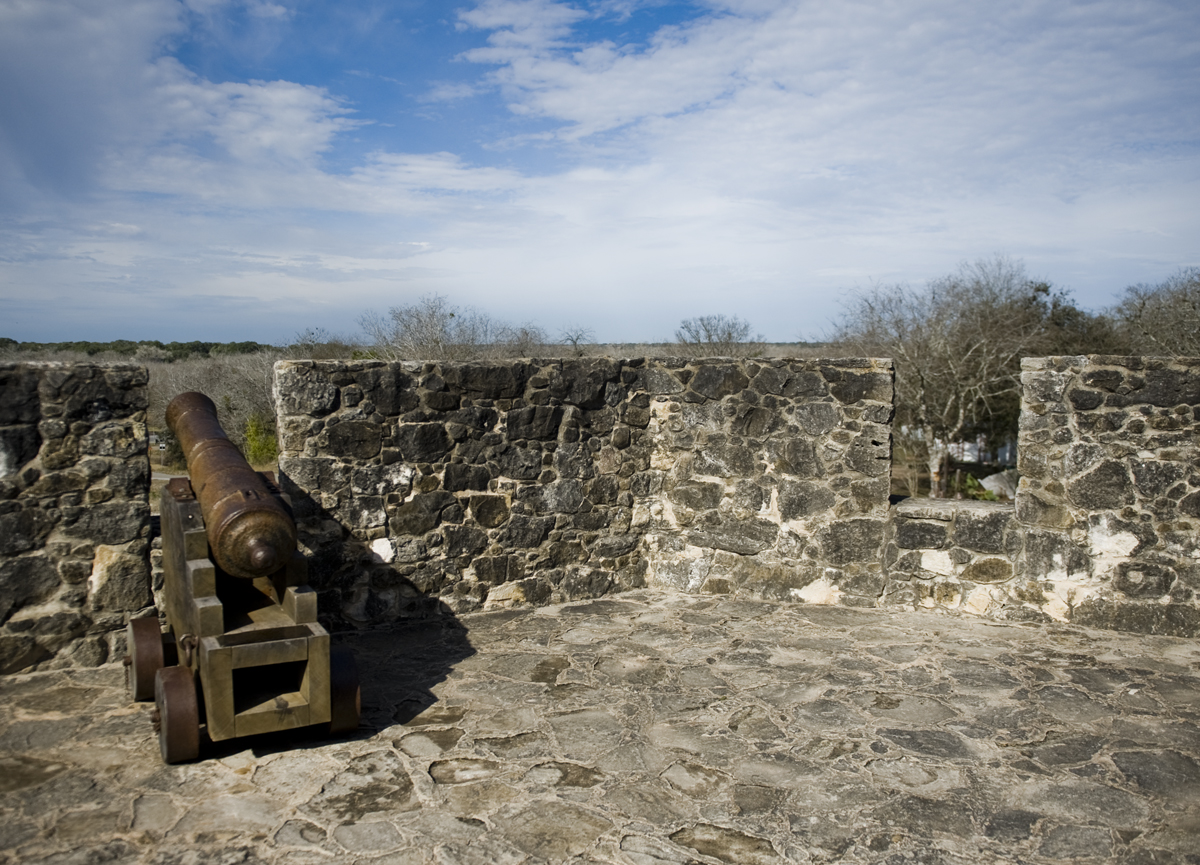
There’s a chapel, which is still functional today. There’s a weekly service every Sunday at 5 p.m. The Catholic Church paid to have the presidio restored in 1963, and the grounds still remain property of the church.

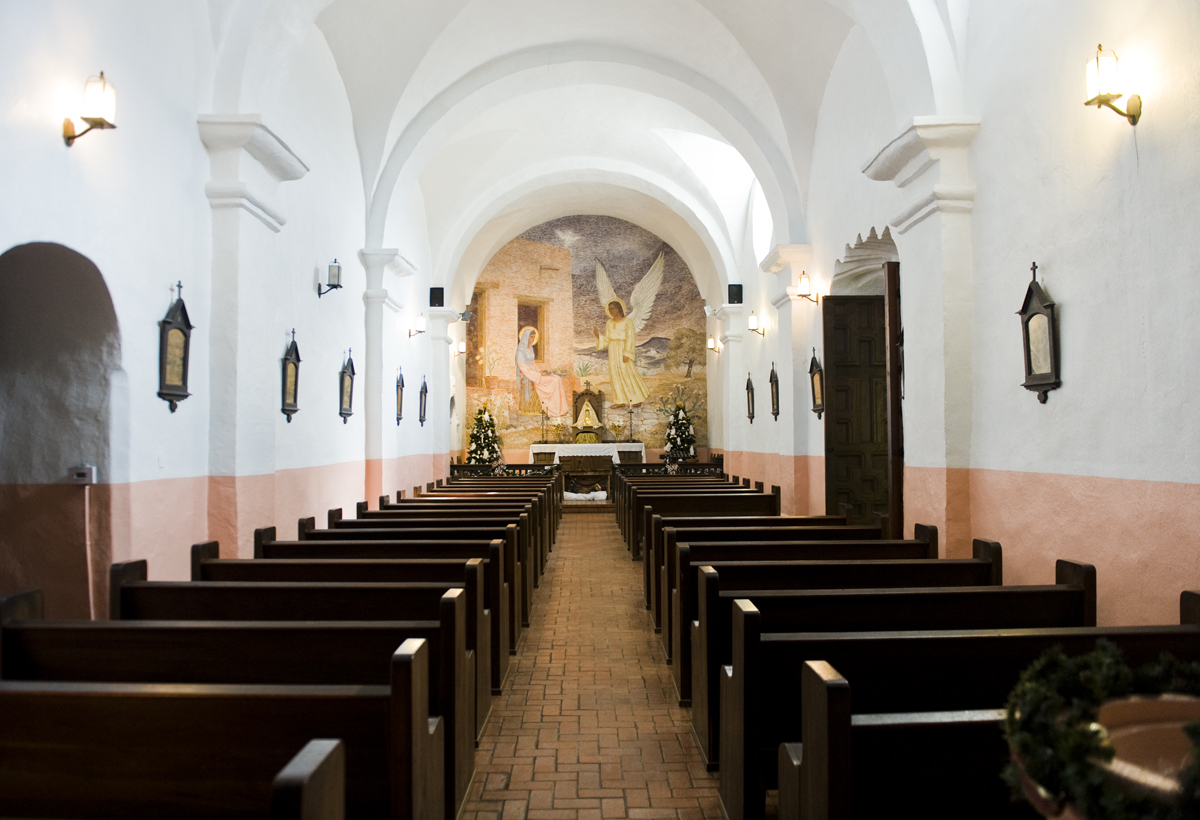
The whole complex felt haunted. Not in a spooky way, though I imagine it might feel that way at night, but in a sad way. A somber feeling came over me as I roamed.
When I finished looking around, I returned to the state park. I still had a little bit of time before I needed to get back on the road, so I took short walk on the Aranama Trail. It’s a short 0.25 mi nature trail that loops behind the mission. There’s a lot to see back there, including some ruins from the old mission. It would be great for kids or a mini adventure.
After my walk, I made some lunch and packed up.
Goliad was the best of both worlds. A little nature, a little history. It was a good choice to open up 2014!
Here are a few links to help you plan your trip:
Goliad State Park (TPWD web site with info on the mission, a map, reservations, etc.)
Presidio La Bahia (everything you ever wanted to know about the presidio)
Mission Nuestra Señora del Espíritu Santo de Zúñiga (wikipedia page on the mission)
Fannin Battleground (everything you ever wanted to know about the battleground)
Goliad, TX (chamber of commerce website)
One comment on “GOLIAD”
Fantastic story Ashley ,your photography is incredible …the night shot is my favorite to ,I also like all the photo of the grounds ,you give such incredible detail in your work .
Thank you again for bring us a great start to 2014 .